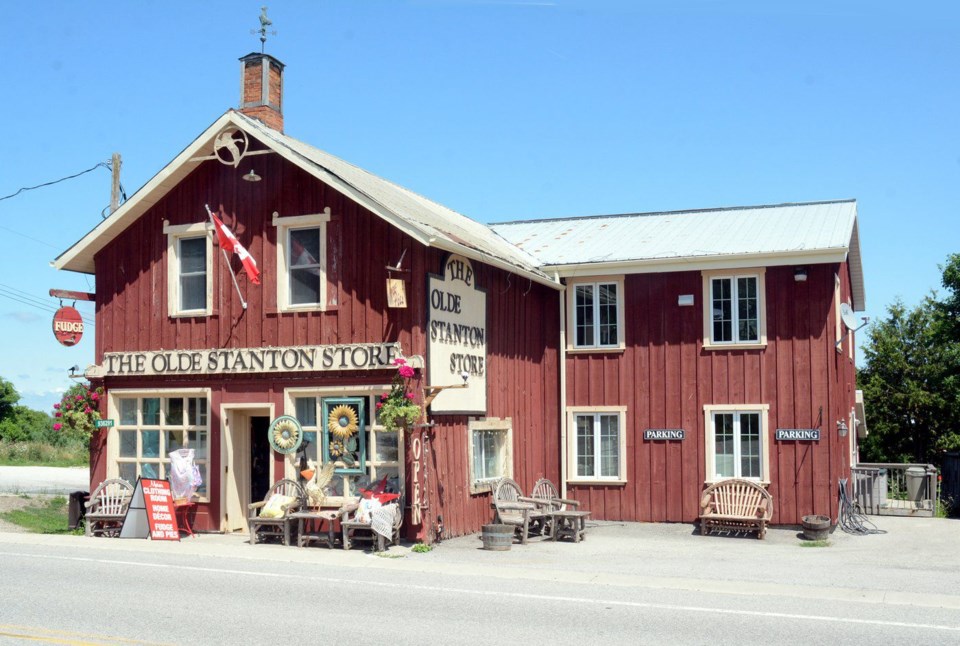Many Ontario towns were named after the original settlers who first staked a claim on the land, cleared the area for farming and, perhaps, opened a general store.
Stanton — which is located in neighbouring Dufferin County on what is now Airport Road, north of Highway 89 near New Tecumseth — got its name when a judge made his decision to settle any future dispute between two founding families of the town.
The earliest settlers in the area were the Hands and the Walker families.
Why the name Stanton was chosen is a mystery – at least, it’s not recorded anywhere – although the town was indeed referred to as Handsville at one time, but it was an unofficial designation.
The two families arrived at the spot in the 1820s and, not long after, a few buildings were erected.
That naturally caught the attention of others who moved to the area.
One of the first official buildings was the Orange Hall, charter number 80.
It was given the go-ahead in 1831.
The first Orange Hall was built on the 5th Sideroad, then later rebuilt in the centre of the village.
The town built a school house on the 5th in the early 1850s, however it was a rather primitive log structure.
They replaced it with a more up-to-date building in 1868.
By the 1860s, the town was booming.
At least booming by early pioneer days standards.
Of course, like any new town in Ontario, alcohol was a primary factor in getting things rolling.
In 1866, William Beatty arrived in town and built the Union Hotel, which also had a tavern and a store.
Mr. Beatty opened Stanton’s first post office the following year to really put the town on the map.
By this time in history, Stanton had become somewhat of a stopping area for travellers.
A second hotel was built in town by man named James Walker.
Apparently people had money to buy things because a third store was opened by a man named John Arthur Love.
The local economy grew to include four carpenters, a wagon and carriage shop, two blacksmith shops, and even a dentist.
The good folks of Stanton and area took care of their teeth.
By the mid-1860s, the town had grown to a population of around 100 souls. The glory years for the small town were the 1870s, which saw more new businesses open their doors.
Toward the end of the 19th century, the town added a butcher and a singing teacher, of all things, who apparently did a brisk business teaching enthusiastic groups of up to 50 people.
In 1870, Stanton was chosen as the seat for a new courthouse.
While the taverns in town provided what many people wanted, they also provided more that a fair share of alcohol-induced rowdiness, which concerned some of the more upstanding citizens.
Although a temperance movement was underway in 1900, a proposed law banning the sale of alcohol never passed.
With the prevailing attitude that his hotel and tavern was the source of much trouble, James Walker decided to get out of the hotel and alcohol business.
The turn of the century saw the town go into decline.
The Stanton post office closed in 1915 and was replaced with rural mail delivery.
The courthouse was closed in 1929 and the courts were relocated to Shelburne.
Over time, most of the buildings were demolished.
One hotel stood up until just a few years ago.
There was a plan to relocate it and preserve it, however funding dried up and the building was demolished.
The old general store is still standing and was The Old Stanton Store for many years. It was a shop that sold a variety of artwork, crafts, and specialty items.
However, it recently closed.
A walk through the building is a step back in time where you can walk across the 160-year-old floor boards and soak up the atmosphere of a long ago era.
Stanton’s history as a working town lasted only five decades, but many of its citizens went on to bigger achievements in the province.
Brian Lockhart, Local Journalism Initiative, New Tecumseth Times



